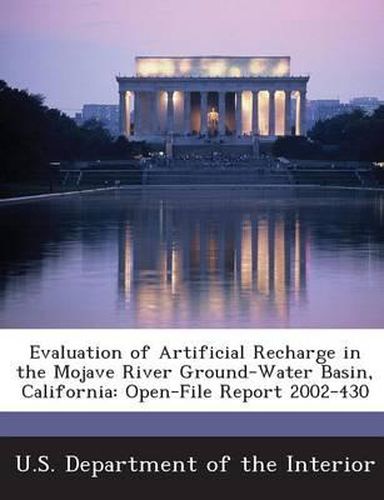Readings Newsletter
Become a Readings Member to make your shopping experience even easier.
Sign in or sign up for free!
You’re not far away from qualifying for FREE standard shipping within Australia
You’ve qualified for FREE standard shipping within Australia
The cart is loading…






The Mojave River Basin relies almost entirely on ground water to meet the needs of its growing population and agriculture, which has resulted in overdraft conditions. Some of the ground-water management alternatives being proposed to mitigate the effects of overdraft include artificial recharge using water from the California State Water Project (SWP) and using SWP water in lieu of ground-water pumpage. A calibrated ground-water flow model was used to evaluate six proposed water-management alternatives using SWP water during a 20-year simulation period, 2000-2019, using constant rates from 1999 for recharge and pumpage (with the exception of recharge derived from Mojave River streamflows which were variable). The measured streamflow for the period of 1970-1989 was used to simulate the Mojave River streamflow. Water-management alternative 1 assumed that none of the Mojave Water Agency allocation of SWP water was available for mitigation measures and resulted in increases in hydraulic head in the floodplain aquifer in years of above-average streamflow (2008-2010, 2013) and decreases in years of below average streamflow. In general, simulated hydraulic heads in the regional aquifer declined with the exception of the El Mirage and Harper Lake areas. Also, average storage depletion for the entire ground-water basin over the 20-year simulation was 40,940 acre-feet per year. Water-management alternative 2 assumed that 30,000 acre-feet per year of SWP water was artificially recharged at Rock Springs Road Outlet (RSO). By 2019, the simulated hydraulic heads were as much as 75 feet higher in the Alto at the recharge site, 24 feet higher in the Transition zone, 15 feet higher in the Centro, and 17 feet higher in the Baja model subareas than the hydraulic heads resulting from water-management alternative 1. Water-management alternative 2 affected simulated hydraulic heads by as much as 5 feet in an area totalling 290 square miles; most of the change occurred in the Alto and Ba
$9.00 standard shipping within Australia
FREE standard shipping within Australia for orders over $100.00
Express & International shipping calculated at checkout
The Mojave River Basin relies almost entirely on ground water to meet the needs of its growing population and agriculture, which has resulted in overdraft conditions. Some of the ground-water management alternatives being proposed to mitigate the effects of overdraft include artificial recharge using water from the California State Water Project (SWP) and using SWP water in lieu of ground-water pumpage. A calibrated ground-water flow model was used to evaluate six proposed water-management alternatives using SWP water during a 20-year simulation period, 2000-2019, using constant rates from 1999 for recharge and pumpage (with the exception of recharge derived from Mojave River streamflows which were variable). The measured streamflow for the period of 1970-1989 was used to simulate the Mojave River streamflow. Water-management alternative 1 assumed that none of the Mojave Water Agency allocation of SWP water was available for mitigation measures and resulted in increases in hydraulic head in the floodplain aquifer in years of above-average streamflow (2008-2010, 2013) and decreases in years of below average streamflow. In general, simulated hydraulic heads in the regional aquifer declined with the exception of the El Mirage and Harper Lake areas. Also, average storage depletion for the entire ground-water basin over the 20-year simulation was 40,940 acre-feet per year. Water-management alternative 2 assumed that 30,000 acre-feet per year of SWP water was artificially recharged at Rock Springs Road Outlet (RSO). By 2019, the simulated hydraulic heads were as much as 75 feet higher in the Alto at the recharge site, 24 feet higher in the Transition zone, 15 feet higher in the Centro, and 17 feet higher in the Baja model subareas than the hydraulic heads resulting from water-management alternative 1. Water-management alternative 2 affected simulated hydraulic heads by as much as 5 feet in an area totalling 290 square miles; most of the change occurred in the Alto and Ba